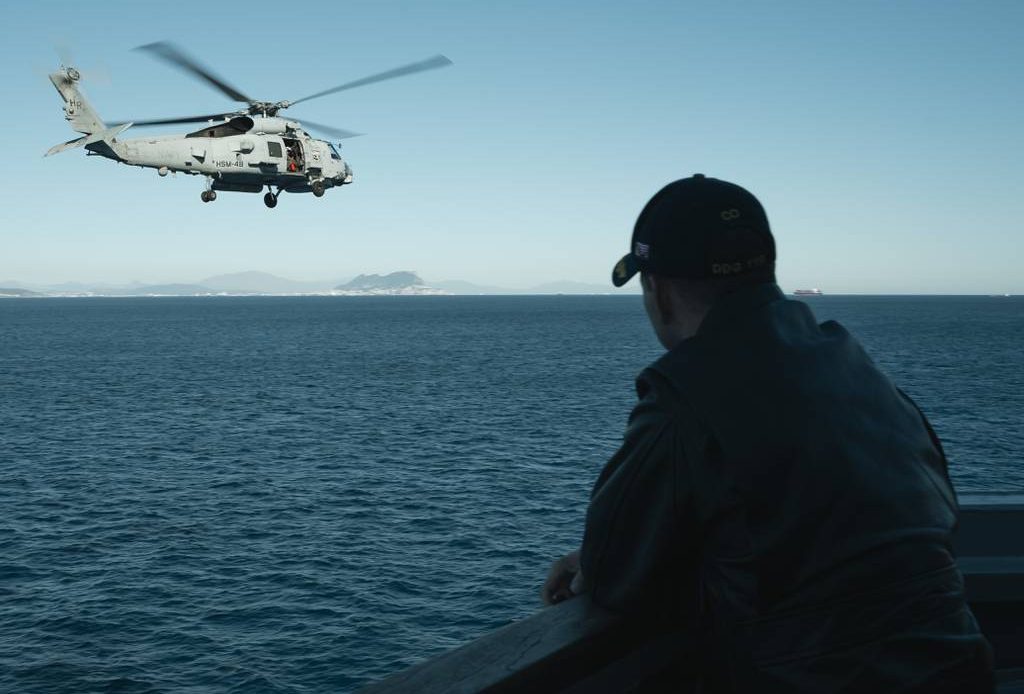
The Navy is exploring a new surface fleet model that would augment a carrier strike group with additional destroyers and cruisers that the strike group did not initially deploy with, a move leaders hope will bolster readiness and improve flexibility of forces worldwide.
Such a model brings a “plug-and-play” capability to naval forces like those currently in the Middle East – allowing for a sustained gray hull presence at a given location, according to U.S. Fleet Forces Command head Adm. Daryl Caudle.
The move would essentially allow warships to relieve other warships that have been on station for long periods of time, Caudle told reporters Tuesday at the Surface Navy Association’s annual conference.
It’s a model that could prove useful as the Navy faces a variety of contingencies worldwide that could test its surface combatants, from the risk of wider war erupting out of the Israel-Hamas conflict in the Middle East, to continued deterrence needs in the Mediterranean Sea and the ever-present concern about a Chinese invasion of Taiwan.
“In large conflict, I’m going to deploy ready-up strike groups,” he said. “But eventually, as everybody knows, when you’re on station for a long time on a ship, you got to take a knee. And so as you roll out to take a knee and somebody rolls in, I have to have high confidence that they come in at the right level of training, certification, mastery and the ability to plug and play into that strike group.”
RELATED
:quality(70)/cloudfront-us-east-1.images.arcpublishing.com/archetype/SKQW642GNNHTHC4BQSWYGYNMDI.jpg)
The Navy tested this array during its response at the onset of Russia’s invasion of Ukraine in 2022, and also last fall following the start of the Israel-Hamas war, when the Ford Carrier Strike Group steamed to the eastern Mediterranean Sea.
In the Ford’s case, destroyers The Sullivans and Delbert D. Black inserted themselves into the strike group so that the strike group’s original destroyers could return home.
“What we found is I didn’t have good standing capability to go do that,” Caudle said. “I had to start from scratch, develop that training plan, that training model. How am I getting the ordnance on them? I had to do an assessment of their people. And all those things are necessary to make sure they go over there ready. And so I’m trying to make that more of a standing capability.”
The current strike group architecture requires carriers, destroyers and cruisers to complete work-ups and certifications together before deploying as part of the Optimized Fleet Response Plan that the Navy uses to man, train and deploy ships during on a 36-month cycle.
Caudle wants to improve “training density” for those replacement ships and get them certified at the contingency response force level – ready to flow to combat within 30 days.
“It’s the difference between training to integrate, and integrate to train,” Caudle said. “And so mine is the former – I like to train so that I can integrate.”
Caudle broke down the Fleet into thirds, where roughly 100 ships are deployed, 100 are undergoing maintenance and the remaining 100 could be mobilized with more agility. This would allow the Navy to transition to a “warfighting footing” more swiftly and surge forces if needed, Caudle said.
The new plan focuses on making that remaining 100 ready to go as quickly as possible, he said.
“I want to make that 100 efficiently obtain a certification, that I can flow that force into harm’s way and know that it can shoot its offensive weapons, it can defend itself, it can communicate, it can interoperate, and basically it can maintain itself, sustain itself and have mobility,” Caudle added.
Caudle said he’s tasked the Ford’s replacement ships with providing feedback as they return from deployment that Fleet Forces can use to improve the “fungibility” of these vessels.
“I think what we’re going to see in the post-deployment analysis is they plugged in seamlessly, and the fact we’re able to do that is a testament to how we generate those forces,” Caudle said.
Author: Diana Correll
Source: DefenseNews



